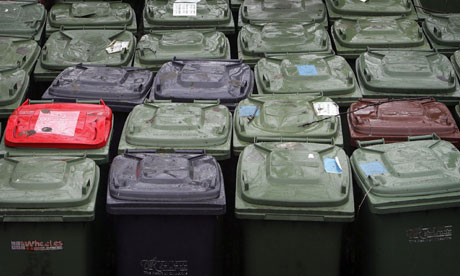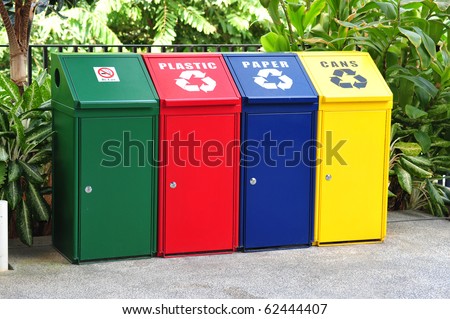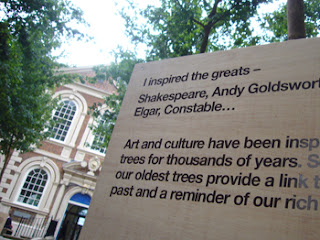Consumption…
is what we are talking about. The department of Art, Media and Design is home to the creative disciplines, Graphic Design included. They all, by necessity and definition, consume resources through the processes of learning and the practice of their craft. How and what do we consume and can we do it better and more efficiently in the interests of working sustainably?
Breaking the problem down…
into three areas of enquiry, we looked at the workshops, the art shop and the buildings and estates department. We did so in the belief that questions directed to these hubs of consumption would give us a good overall picture of the management of resources within the department. First of all though, we...
Brainstormed..
the problem. With no suggestion off limits, as are the rules, this is the flow. Workshop equipment; how much is turned on for the entire day and does it need to be? Empty rooms; could the management of these be improved so energy is not wasted in heating/lighting? Could smaller working spaces be heated more efficiently (thinking particularly of cubic footage in studio)? Insulation; where there are large areas of glass, is it thermal? Paint used for the fabric of the building; does it have eco credentials? Furniture; would it recycle and are there superfluous items in the studio? Recycling bins; are there enough and are they specific enough e.g. blades, photography paper, paper cups? Life room; is there a more efficient way to heat this? How green are the inks used in printing? Studio; is there a more efficient way to heat this through the winter, e.g. woodburning stoves? Can the heat be turned down, modulated, in line with the daily climate? Is there a policy for water usage and is waste water recycled? Is lighting low energy? Could we work in a more paperless way using technology? How much paper purchasing is recycled goods? How far do suppliers travel? Could better studio facilities reduce disposable waste e.g. kitchen area for food prep/drinks? Could lighting/taps/flushing be sensor controlled? How are areas of intense energy demand managed, e.g. kilns? Do we need trips? Could terms be increased to reduce overall time to acquire a degree, principally conserving student financial resources?
Art Shop..
- An estimated 40% of delivery couriers are not from local areas which means there are more fuel emissions occurring whilst the deliveries are being made
- There are no recycled papers available to buy in the art shop due to a higher cost
- Currently there is only two products sold in the shop that are recyclable; paper and batteries. Lots of coated paper and card will be scrapped.
- They claim not to have any scrap items but if they do have any they mark the price down and sell them to students at a reduced price to prevent waste
- Any waste cardboard is put into a room for students to help themselves to, if this becomes a fire hazard the estates team is called and they then come to take away the cardboard to be recycled.
- They have one small recycling bin in the shop which is used for paper.
Workshops...
- The workshops have a range of very heavy machinery for use in woodwork, metalwork and plastics all of which would inevitably use a lot of power. The waste products, including wood, styrofoam and various plastics do not appear to have recycling facilities. The bins contain a mixed collection of all waste materials.
- On our research into the workshops we discovered that there are no sustainable procedures in place. When asked, the technicians explained that they only keep track of the 'business side' of the area. Their stats are concerned with expenditure, profits and losses within their stocked materials.
- We were unable to establish how waste materials are disposed of, that is, the excess that hasn't been reused by students. We can only presume the waste is binned along with the regular rubbish in the University.
Buildings and Estates...
- In 2010 the university published its Carbon Management programme. This sets out an objective to reduce emissions by 25% and 48% by 2014 and 2019 respectively as set against a 2005/06 baseline. The report addresses a number of the questions raised in the course of our discussions around the university's approach to sustainability.
- The university does not have a sustainable procurement policy, although it is a stated aim of the current Environmental Manager.
- There are funds for a biomass boiler to be installed at Yarlet halls of residence but it is a long term objective for elsewhere in the university.
- Since 1st April 2012 the university purchases 100% green energy from its suppliers.
- Lighting is gradually being replaced by a lower emission alternative
- This summer the heating in Flaxman, Henrion and Brindley will be upgraded so that it can be more responsive to prevailing weather conditions.
- Automated lighting controls are to be installed in larger areas. Payback time is too long for small areas.
- There are no immediate plans to target energy use in the kilns area.
Recommendations...
- More recycling bins - everywhere! In the studio and in the art shop, allowing for the separation of different types of paper, cardboard, glass and plastic. Create more opportunities for everyone to do it effortlessly.
- Implement a more rigid policy for purchasing from local suppliers where practicable.
- A greater supply and range of recycled alternatives from the art shop.
- Consider turning wood waste into chippings for use in a woodchip and pellet heating system with proven efficiences of up to 93%.
- Examine disposal procedures of waste from the workshops
- Become as paperless as possible (within what is practicable - it is an art department after all) e.g. Module Packs, online access only. Written work submitted online. Using blogs etc.
- Reconfigure the studio into smaller, screened workstation areas with one large breakout area for lectures/presentations. Could this help toward heating efficiency in colder months? Could it aid productivity?
- Kitchen facilities in studio to reduce disposable waste e.g. mugs not cardboard cups.















.jpg)
























